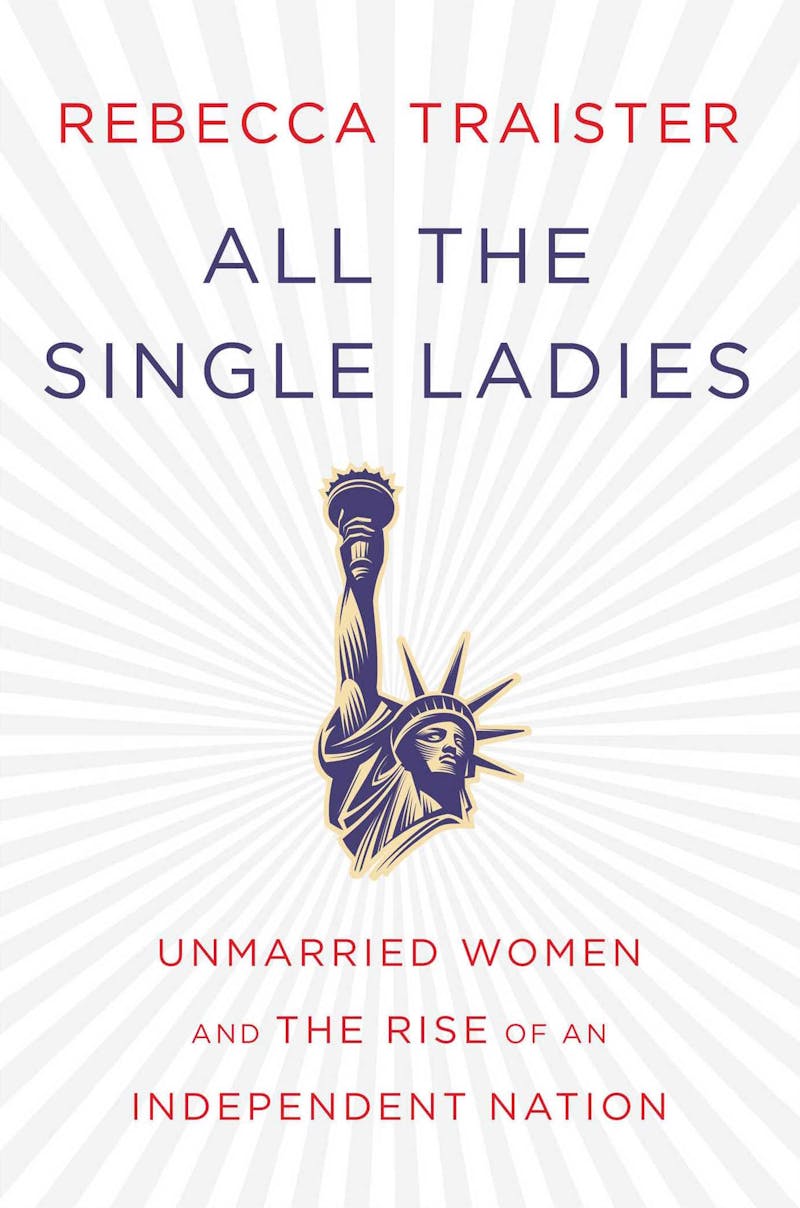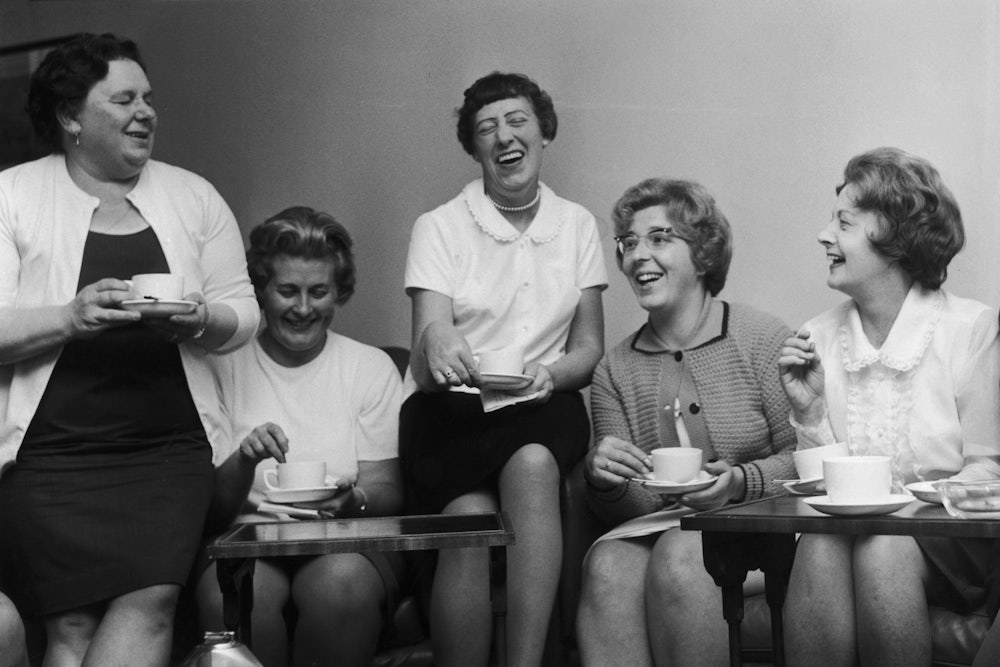The comedy, How to Be Single, released last week as a kind of prophylactic against anticipated Valentine’s Day angst begins, “There’s a right way to be single. And a wrong way to be single.” The right way looks like Rebel Wilson breaking it down in the club, uninhibited and unrepentant, or Dakota Johnson reading a book on her fire escape. The wrong way is spending your days paging through wedding magazines and dating profiles hunting for Mr. Right. It’s an anti rom-com, but the happy ending is still there. It just looks different. Instead of beginning with a single girl and ending with a jubilant couple, the movie begins with a breakup and ends with the heroine’s recognition that she really, truly wants to be single—“to know who I am alone.”
These are the women Rebecca Traister writes about in her new book All the Single Ladies: Unmarried Women and the Rise of an Independent Nation. Instead of lamenting the absence of a wedding ring, they are embracing and enjoying their single status. It’s a seismic shift in attitudes from the obsessive husband-hunting of a Carrie Bradshaw or Bridget Jones. For most of history, unmarried women have been looked on as tragic and weird—at best, pitied as incomplete creatures doomed to die alone with their cats; at worst, reviled and targeted, Salem-witch-style, as dangers to the social order. The stigma surrounding unmarried women has finally begun to fall away for the simple reason that there are so many of them. In 2009, for the first time in American history, unmarried women outnumbered married women. By 2012, they made up almost a quarter (23%) of the electorate. They occupy every class, region, and racial group in America, and their numbers are rising every year. In 2014, there were 3.9 million more single adult women than in 2010. “We are a new republic, with a new category of citizen,” Traister declares.
Her book is a monumental study of the political, economic, social, and sexual consequences of the rise of unmarried women. These are, in short, tremendous. Unmarried women are changing the workforce. They are redefining the family. They are rewriting social and economic policies. They helped put Obama in office and will have considerable say in who replaces him. Formerly relegated to the margins of society, unmarried women are now reshaping the nation. And they are creating serious anxiety among America’s conservatives—perhaps the most telling testament to their growing influence. In 2014, Fox News pundit Jesse Watters labeled them the “Beyoncé voters”: “They need things like contraception, healthcare, and they love to talk about equal pay.”
Not so long ago, the idea of women choosing to remain unmarried was a radical, fringe idea. It was championed only by a handful of feminists who saw marriage as a tool for the oppression and enslavement of women. Even Betty Friedan, author of The Feminine Mystique, didn’t advocate that women abandon marriage, only that they have the opportunity to pursue careers as well. Today, 70 percent of women say they would rather be unmarried than become housewives. How did the decision not to marry go from radical to simply normal?

As with many social developments, Traister explains, abstention from marriage was first practiced among American women for whom marriage was no longer the best option—women in communities where men were incarcerated in large numbers, living in poverty, or unemployed. This is to say that the trend began with poor women and women of color, not privileged, glamorized socialites with trendy apartments and vast shoe collections. Rich white women co-opted the behavior of comparatively powerless women, much as they co-opted jazz or the idea of women working for wages. “It has long been,” Traister writes, “the replicative behaviors or perspectives of white women—and not the original shifts pioneered by poor women and women of color—that make people sit up and take notice, and that sometimes become discernible as liberation.”
In the later decades of the twentieth century, education, employment and reproductive rights—the fruits of second wave feminism—made it increasingly possible for women to build independent lives. On top of this, the divorce surge of the late 1970s and 1980s made the unmarried woman a more common and accepted figure. At the same time, it forced the recognition that marriage is not necessarily the optimal state of affairs. Today women don’t need a husband to secure an income or a home, they aren’t ostracized for having children out of wedlock, and they would rather avoid the emotional and financial mess of divorce. It is not so much that women are rejecting marriage as that they feel no great compulsion to marry. The revolution, Traister emphasizes, is in “the expansion of options, the lifting of the imperative that for centuries hustled nearly all (non-enslaved) women, regardless of their individual desires, ambitions, circumstances, or the quality of available matches, down a single highway toward early heterosexual marriage and motherhood.”
By delaying or abstaining from marriage, Traister argues that these women may actually be helping to save marriage as an institution. They are holding it to a higher standard; they are demanding more of it—that it be an equal partnership, a true meeting of hearts and minds, not a functional arrangement for economic utility and social approval. Most women are still marrying at some point in their lives but only after they’ve spent many years leading their own lives and developing as independent adults. (Traister herself married in her mid-thirties.) As it turns out, the states in which couples marry less frequently and at later ages are also the states with the lowest divorce rates.
Sadly but unsurprisingly, conservatives don’t see it this way. They continue to blame many of America’s social ills on the decline of marriage and the rise of single women. Jeb Bush has said women on welfare “should be able to get their life together and find a husband,” suggesting the problem is the lack of stigma attached to motherhood outside of marriage. Marco Rubio has insisted, “The greatest tool to lift children and families from poverty…isn’t a government spending program. It’s called marriage.” These assertions are maddening on several levels. They wrongly see traditional family structures as a cure-all. In fact, child poverty rates in America include children in married households. And in other developed countries, poverty rates for households led by single mothers are much lower. Politicians who make these claims are avoiding implementing social and economic policies to address the real problems that afflict single mothers—wage stagnation, unequal pay, unemployment, and the lack of universal childcare and paid parental leave.
Conservatives disdain the women who call for these policy changes as “welfare queens” seeking dependence on the government in place of a husband (never mind the fact that married women and men would benefit from these policies too). But as Traister points out, this is quite hypocritical: The government has long supported male independence with grants, loans, incentives, and tax breaks to encourage men’s home and business ownership. It’s time to revise our social and economic structures to support female independence too.
Despite the frustrations and inequities it describes, Traister’s book is laced with the excitement of a nation that is finally, fully waking up—undoing the shackles of oppressive customs and ushering half the population into independence on a massive scale. Indeed, the rise of unmarried women is, as she puts it, nothing less than the “invention of female adulthood.”
But single women changing America is not exactly an unprecedented phenomenon. They have always changed America, even when their numbers were small. While married women devoted their time and energy to their families, America’s defiant spinsters tended to devote themselves to social and political movements. They fought for fair labor practices, the abolition of slavery, education reform, prohibition, and, of course, women’s suffrage. The first industrial strikes were led in Lowell, Massachusetts by women—young, poor, often immigrants. Abolition, too, was particularly dominated by the fairer sex: “When the true history of the antislavery cause shall be written,” Frederick Douglass observed, “woman will occupy a large space in its page.”
The history of progress in America is, in many ways, the history of independent women—of women trying to forge a nation that, at its inception, failed to “remember the ladies,” along with a number of other Americans. They are still forging it today, holding it to its own promise of freedom and equality. Traister’s book points the way to what that nation might look like. What is thrilling is not just the prospect of enlightened social and economic structures, but of a whole society of women who have the chance to develop full, independent identities, to know who they are alone.
